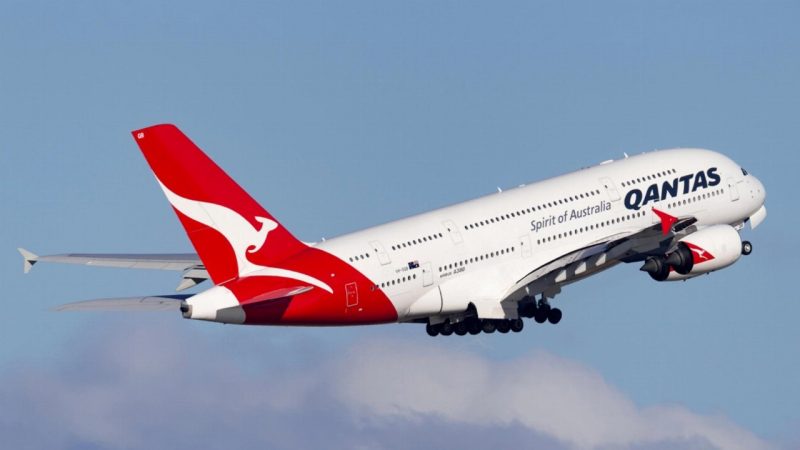It’s no secret the travel industry was the hardest hit by COVID-19. Travel agencies, tour companies and airlines were crippled by the economic effects of the pandemic and have only recently started to properly recover.
Among these is ASX 200-listed company and Australia’s largest airline, Qantas (QAN).
What started as the ‘coronavirus scare’ that caused Qantas and other airlines alike to reduce flights to Asia soon became a global pandemic that plagued the entire industry.
When the World Health Organisation declared COVID-19 a worldwide pandemic in March 2020, countries sealed off their borders and global and domestic airlines generally ceased to operate.
It was around then Qantas decided to slash all international flights and stand down the majority of its staff members with no promise of when they could return to work.
These events saw the ASX 200 lister’s share price plummet to an all-time low of $2.14 per share, after sitting at around $7 at the start of 2020.
To get through the following year or so, Qantas’ survival technique consisted of cutting thousands more jobs in mid-2020, taking on billions of dollars in debt, and completing a $1.3 billion placement in June 2020 to ensure it had enough liquidity to survive until the end of 2021.
While fully-vaccinated Australians were able to leave the country without exemption from November 1, 2021, and Qantas saw a significant increase in domestic flight bookings, it was still feeling the financial effects of the pandemic.
In the six months to December 31, 2021, Qantas CEO Alan Joyce described the period as “one of the worst halves” since COVID began. The Delta and Omicron outbreaks led to widespread lockdowns that continued to strain the travel industry.
In mid-January 2022, Qantas was forced to cut domestic travel to 70 per cent of pre-COVID levels, as well as international travel from 30 to 20 per cent. By the end of January, Qantas shares were sitting at roughly $4.50.
Shares began to climb steadily, but in February 2022 the multi-billion-dollar stock posted a fourth consecutive half-year loss before tax of $1.28 billion. This saw the QAN share price fall down to $5.08 cents each after sitting at $5.52 earlier in the month.
While Qantas reported strong demand for international travel in the first quarter of the year, a few key markets were yet to open. Nevertheless, Qantas had bookings for places like London, Los Angeles, South Africa and Bali — all of which were reportedly above pre-COVID levels. Qantas subsidiary Jetstar had also restarted over 60 per cent of its international routes as more leisure destinations in Asia re-opened.
As for domestic travel, Qantas and Jetstar were operating at approximately 110 per cent of pre-COVID capacity over the Easter school holidays. The company said April was its busiest month since the beginning of the pandemic, leaving a positive outlook for the months to come.
Importantly, Western Australia had finally opened up its fortress-style border to the rest of the world, being the last Australian state to do so. This allowed travellers to visit and locals to venture off after enduring one of the longest border closures in the world.
Qantas was certainly in a positive period of recovery, with travellers — vaccinated or not — free to travel in many parts of the world. However, this didn’t come without challenges.
Departure times within the domestic airline industry dropped significantly due to COVID-19-related shortages and staff absences, causing major operational challenges. Among the challenges were countless flight delays and cancellations, baggage losses, and more, which were experienced around the world — particularly during the Northern Hemisphere’s warmer months as tourists flocked to their favourite summer destinations.
Further, fuel prices hit record highs, which forced Australian airlines to increase airfares and look at reducing their capacity forecasts. Qantas, specifically, cut a further five per cent of domestic flights, taking the total to 15 per cent since May.
The aviation giant’s share price began to spiral again, and by mid-July 2022, Qantas shares were back down to $4.24 per share.
For the full 2022 financial year, Qantas reported its third major statutory loss of $1.19 billion. The result took the total statutory loss before tax impact of COVID on the Qantas Group to nearly $7 billion, and its total revenue losses had reached $25 billion.
Yet, a couple of months after releasing its full-year report, the travel giant flagged a return to profit for the first time in over two years. Qantas announced in October it expected to report between $1.2 and $1.3 billion in profits for the first half of FY23.
This announcement came just a few weeks before “continued strength” in travel demand prompted the multi-billion-dollar company to increase its expectation to between $1.35 and $1.45 billion.
Consumers were prioritising travel ahead of other spending categories after a long period of not being able to do so, and Qantas itself was finally experiencing significant improvements to its overall operations.
Total group capacity (international and domestic) is now expected to increase from 73 per cent of pre-COVID levels in the first half of the 2023 financial year to 85 per cent in the second half.
Combine all this with a $400 million share buyback — shrewdly announced alongside the full-year loss back in August — and Qantas shares have begun to take flight once more.
Qantas’ stock price now sits only marginally below where it was prior to the start of the COVID-19 pandemic, having traded comfortably over $6 per share over the month of December.
After a tumultuous two-and-a-half years of uncertainty and spikes in positive and disappointing performances, Qantas is feeling the strength of people’s desire to travel freely and has put measures and initiatives in place to make operations run as smoothly as they can.
With a positive outlook on the year ahead, the flying kangaroo is determined to prosper for the long haul.

